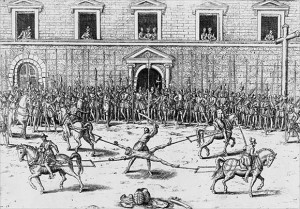The description of the death of Robert-Francois Damiens, the man who attempted to kill Louis XV, is not for the faint-hearted.
On March 2, 1757, in front of a crowd of spectators, Damiens was drawn and quartered, which means that his limbs were tied to four horses that were then urged to gallop toward the four points of the compass.
To discover why six horses were needed in the end and why various additional tortures were inflicted on the convict, you need to turn to the detailed description that opens French philosopher Michel Foucault’s Discipline and Punish, perhaps the most blood-curdling beginning to an academic book ever.
In this 1975 masterpiece, Foucault argued that punishment, which was public and dramatic for much of recorded history, became progressively more hidden during the construction of the modern penal system. As part of this pivotal transformation, Foucault noted, “it is the certainty of being punished and not the horrifying spectacle of public punishment that must discourage crime.”
Institutions, in other words, replaced the theater of cruelty. What was once spectacle has become hidden from our eyes.
Is ISIS Medieval?
It’s hard not to view the very public atrocities committed by the Islamic State (ISIS) against the backdrop of this history.
ISIS too has staged horrifying spectacles. It has beheaded journalists and burned a Jordanian pilot alive. It has made films of these events to gather the largest possible audience of spectators. With more of a domestic audience in mind, it has also engaged in less visible but no less gruesome acts, such as crucifixions and mass executions reminiscent of the NaziEinsatzgruppen.

